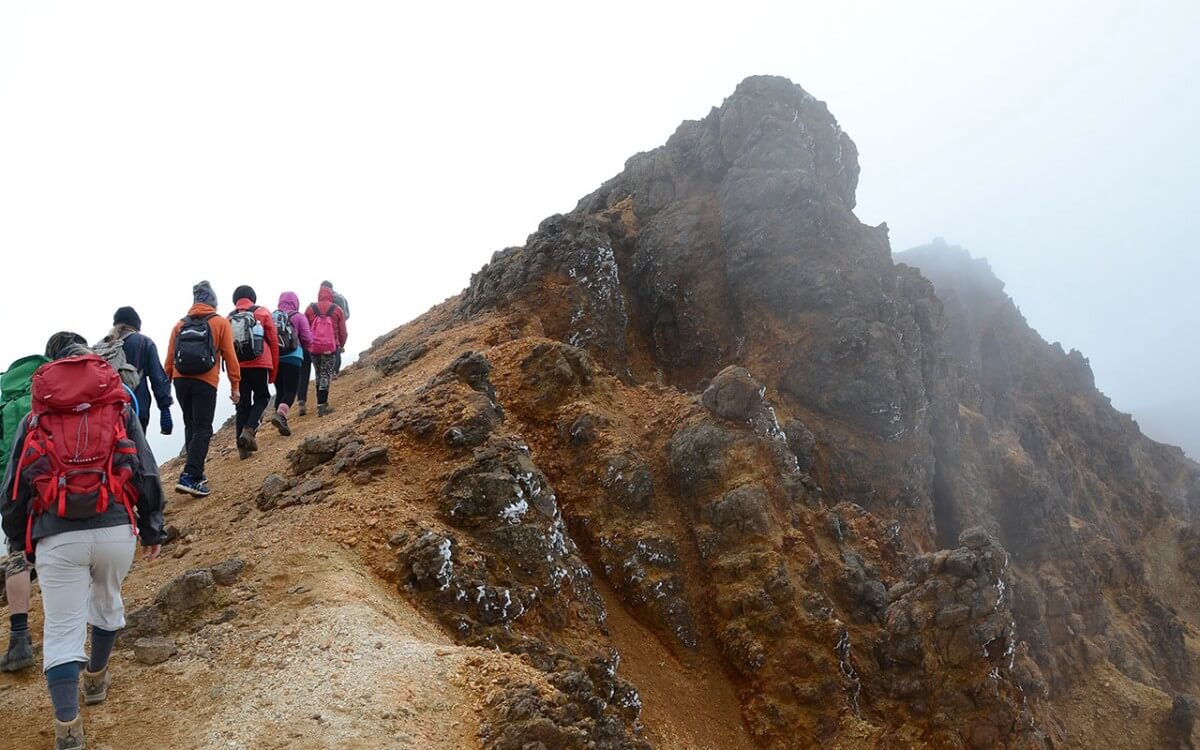In one of the world’s best ski destinations amidst gorgeous climbing cliffs, teenagers ski, climb, kayak, cycle and camp in stunning natural beauty. Here, adrenaline is pumping, determination and laughter helps people form strong bonds as they challenge their personal limits.
This may sound like a scene from a movie or an ad for designer outdoor gear like Patagonia, but in reality, it’s just another day in the Outdoor Education Programme at Hokkaido International School (HIS) .
Located in Sapporo, Japan, HIS is a private, co-educational day and boarding school that offers an American-style education from Early Years to the university prep Advanced Placement programme in high school. It holds accreditation from the Western Association of Schools and Colleges and is a member of the Japan Council of International Schools (JCIS) and the East Asia Regional Council of Overseas Schools (EARCOS).
The school’s vision is to produce well-rounded leaders who thrive in their academics, character and global citizenship. Since its founding in 1958, HIS has since built a reputable and impressive track record of achieving this trifecta of success. A key ingredient behind this, as students, alumni and educators here would attest, is its emphasis on outdoor education.

Source: Hokkaido International School
At HIS, Grade 9 and 10 students pursue many projects and outdoor trips, culminating construction of a one-person kayak as the final project of the Outdoor Pursuits course. They then advance to the Outdoor Leadership course in Grades 11 and 12, where they go on hiking trips, climb the coastal cliffs and experience classroom sessions where they study communication and human nature.
Twice a year, HIS students go on overnight excursions into the backcountry of Hokkaido. From backpacking through the alpine heart of Daisetsuzan National Park for 12th graders to tent camping at Niseko, the powder capital of Japan, or even a multi-day winter extravaganza in snowy woods, there’s a wide range of opportunities for HIS students to discover their true capabilities while enjoying the amazing Hokkaido outdoors.
Students can also sign up to earn an Outdoor Leadership Certificate, a unique program requiring three-years of work and six major requirements, all to bolster their abilities, confidence and charisma in the area of outdoor leadership.
Dave Piazza, who coordinates the Outdoor Programme, has witnessed the multi-dimensional benefits students receive from the combination of these courses.

Source: Hokkaido International School
Nothing says experiential education more than being in nature. It’s in the untameable wild that young adults appreciate the natural world and “promote an ethos of planet-wide stewardship,” according to Piazza.
“The main transferable skills are leadership skills, especially for students coming out of the Outdoor Leadership class for 11th and 12th grades,” he said.
“[In] both OE classes, students are involved in lots of collaborative projects (for example, camp cookoff, kayak construction) and informative presentations, such as trip planning, wildlife stewardship. Both in the OL class and Outdoor Pursuits class, students learn about and practice first aid,” he explained.
Beyond the curriculum, there’s the Adventure Hokkaido Outdoor Club (AdHOC) that takes students swimming under waterfalls, climbing snow-capped peaks and even hunting for snow bugs at the local park. The aim is to explore the wide range of terrain and destinations of this northern island and open students to conquering new experiences.
But it isn’t just a healthy mind that’s nurtured by this well-designed outdoor education. According to the Center for Disease Control and Prevention, regular physical activity can help children and adolescents improve cardiorespiratory fitness, build strong bones and muscles, control weight, reduce symptoms of anxiety and depression, and reduce the risk of developing health conditions such as heart disease, cancer, Type 2 diabetes, high blood pressure, osteoporosis and obesity.

Source: Hokkaido International School
The World Health Organisation (WHO) concurs. In its guidelines for physical activity for children aged five to 17 years old, WHO recommends at least 60 minutes of moderate- to vigorous-intensity physical activity daily, which should be mainly aerobic and complemented with more vigorous-intensity activities incorporated at least three times per week. This is “to improve cardiorespiratory and muscular fitness, bone health, and cardiovascular and metabolic health biomarkers”.
With a location like Hokkaido, it doesn’t take much for HIS’s teachers to convince students to participate in these activities and to rake in all the hard and soft skills they bring. On land, there are numerous and excellent hiking trails – both in forest and alpine regions – to pick from, snow-capped mountains for skiing or snowboarding, natural cliffs for rock climbing and even biking trails for both road and mountain bikes. With coastlines on the Sea of Japan and the Pacific Ocean, HIS students are just one short drive away from a fun day of sea kayaking or sea fishing.
It should come as no surprise that these activities, which are great for academic and personal development but are also highly enjoyed by HIS students. As Piazza said: “They love it when we bring them into Hokkaido’s natural world and challenge their limits. Students also appreciate that many of the OE classes use the outdoor environment as the classroom for a refreshing change of pace.”
You can read more about Hokkaido International School at their website, found here.











